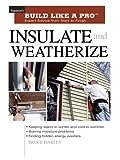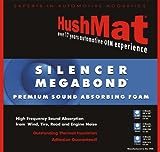
The world is your sitting room Richie McCarthy reports back on his experiments:
If you’re dwelling in a van or even a car, or any other kind of vehicle, the right choice of well installed insulation will keep you warm during winter, and cool during summer. Most important, it will help keep the dreaded damp at bay.
Most types of insulation have been tried and tested by the building trade, and are used worldwide. But using these materials in vans or buses can alter their effect. I have explored five insulation methods , and will provide enough information for you to make the right choice.
If you ask off-gridders for advice on what materials to use, you’ll find yourself in a minefield of pros and cons. A poorly insulated vehicle is comparable to a tent, yet insulating can be a simple and very rewarding process. As with tents the thin layer of metal, or canvas between you and the outside world creates damp and condensation where warm air meets cold. Any warmth produced within your vehicle will soon disappear through the thin metal unless you provide a barrier to prevent the loss
If there is space you could choose to install a wood burner to cure damp, and to keep warm, however even the best burner would prove inefficient unless there is sufficient insulation throughout the vehicle.
Polystyrene
Polystyrene is a cheap method of insulation and provides a lot of heat. You can buy bales of Polystyrene where sheets come in varying thickness from 1/2 inch upwards. This will allow you to fit sheets into small areas, and to ensure all cavities are filled. The best way to fit sheets is similar to how they’re fitted in buildings, by battoning the area to be insulated and cutting with a saw to the exact size of the area between the batons. This is an easy to complete process. Battons can be screwed to ribs on walls and ceilings, or can be glued using strong building glue.
Kingspan
A great all round insulation for larger areas, unlike polysyrene it does not come in such a variety of thicknesses. It generally starts at 1 ½ inches and is useless for small cavities. Each sheet is made with a dense material sandwiched with a reflective silver sheet on each side, which is excellent to reflect heat in during winter and out during summer. It can be cut easily with a bread knife, but is not recommended for small spaces unless you are very patient.
Polyurethane foam
This method has been hailed by self build caravanners as the ultimate form of insulation. There are many companies offering a full van spray facility where you take your vehicle into their workshop and they fill every cavity with foam. This method ensures that all condensation is kept out of the vehicle and there are no gaps whatsoever. This method can be very expensive, and also quite restrictive if you need to run wiring, or pipes afterwards.
Glass Fiber insulation
Commonly used and reasonably inexpensive, rock wool and other glass fiber insulators allow you to pack cavities with wool ensuring good heat retention. The only issue with glass fiber is that it does not ward off damp, and depending on your location can cause a slight smell.

Hemp/fleece/ ecowool
Similar to glass fibre insulation, these forms of are good for retaining heat, and are positive to the environment. However these natural insulators can be very expensive. Organic material can also attract mice, so unless the insulated area is very well sealed, you may have little visitors nibbling at your pricey insulation.
In terms of heat any of the insulators listed will provide you with good heat during the winter. Levels of heat usually vary with the density of material used, and also how well the vehicle has been sealed. Remember that your vehicle will also need to be vented to ensure movement of air. Skylights will allow circulation of air through the vehicle, if you do not have a skylight consider how you will ventilate your vehicle before you install insulation.
Damp
Damp can be controlled, but usually not totally combated. Polyurethane foam tends to be the best method for combating damp as it fills all cavities and is in total contact with the walls of the vehicle. Installing a wood burner or dry air heater will assist in making sure clothing and bedding do not get moldy.
During the summer kingspan sheets or any other form of insulation with reflective material will help to keep heat out of your vehicle. If you live or will be traveling in hot regions be sure to consider this when choosing your insulation.
Choose your insulation carefully consider damp, heat, location, budget, and environmental impact. If you can assess these aspects critically you will find the best insulation for you and your vehicle. For more information browse self build motor caravanners websites, vehicle conversion companies, and web forums.
Conclusion
Overall, I would recommend Kingspan as an ideal form of insulation. If it is fitted properly, paying attention to small gaps, and filling with expanding foam it will provide you with a dense insulation with the added benefits of reflective surfaces. These surfaces keep heat in during winter and out during summer. An all round high quality insulator at an affordable price, even those with few DIY skills can achieve great results.
2 Responses
I am insulating now. Si I am learning and eflective Maylar seems great to make me feel wamer
This is a really great idea, people are taking to their cars/vans/trucks as homes, sometimes by choice and sometimes not, either way, it’s important to be able to keep your home on wheels as comfortable as possible. Thanks for writing this. :)
Wretha